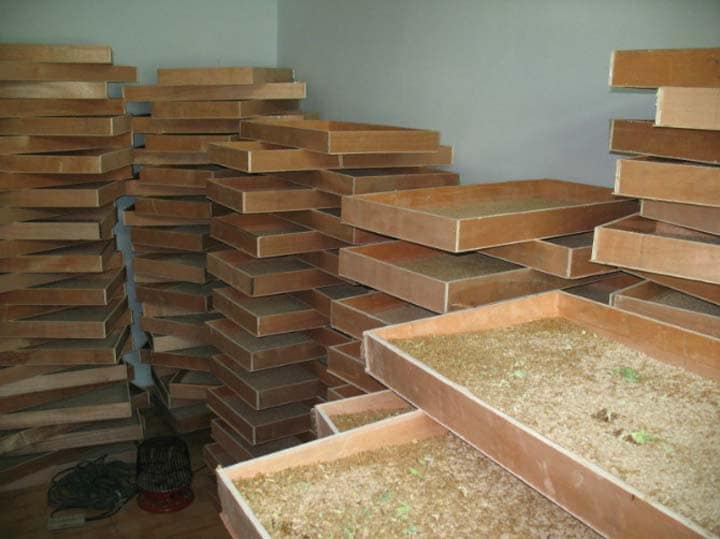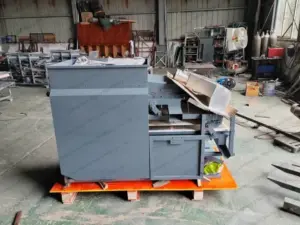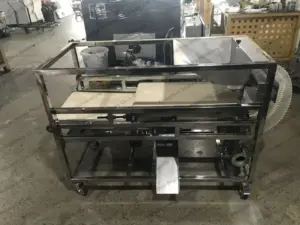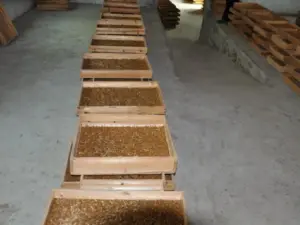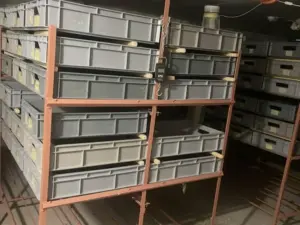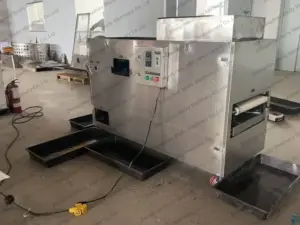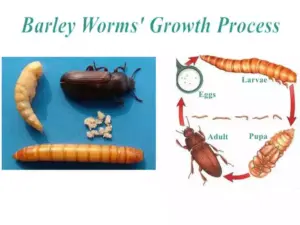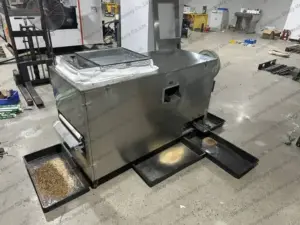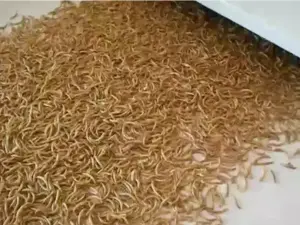สำหรับผู้เลี้ยงหนอนนก มีข้อควรระวังหลายประการที่ควรสังเกตเมื่อพวกเขาดำเนินโรงเพาะพันธุ์หนอนนก วิธีการเพาะพันธุ์หนอนนกเหลือง การคัดเลือกหนอนเพื่อการค้า การใช้เครื่องคัดแยกหนอนนกและเครื่องคัดแยกหนอนนกอย่างถูกต้อง และการจัดการป้องกันโรคแมลง Tenebrio ควรให้ความสนใจอย่างเพียงพอ เพื่อให้แน่ใจว่าการเพาะพันธุ์หนอนนกมีผลกำไรมากขึ้น
เหตุใดจึงต้องใช้เครื่องแยกหนอนมื้ออาหารเมื่อเลี้ยงหนอนมื้ออาหาร
ในกระบวนการเลี้ยง Tenebrio Molitor โดยเฉพาะอย่างยิ่งในระยะตัวอ่อน ดักแด้ และตัวเต็มวัยของหนอนนก มักจำเป็นต้องใช้อุปกรณ์ร่อนหนอนนก เมื่อให้อาหารตัวอ่อน เกษตรกรส่วนใหญ่เลือกใช้ใบไม้และรำข้าวประเภทต่างๆ เมื่อตัวอ่อนในกล่องเพาะเลี้ยงเติบโตไประยะหนึ่ง จะมีมูลหนอนและเปลือกหนอนจำนวนมากเกิดขึ้นในกล่องเพาะเลี้ยง และแม้แต่แมลงที่ตายแล้วบางส่วนก็จะกลายเป็นสีเทาและดำในกล่องเพาะเลี้ยงทั้งหมด
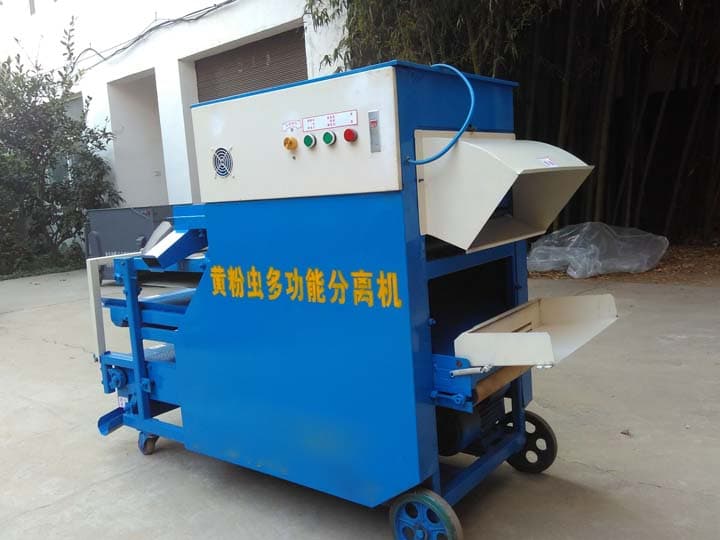
ในเวลานี้ ผู้เพาะเลี้ยงต้องคัดแยกตัวอ่อนในกล่องเพาะเลี้ยงให้ทันเวลา และแยกแมลงที่ตายแล้ว เปลือกหนอนและมูล รวมถึงเศษอาหารที่เหลือและปนเปื้อน เพื่อให้แน่ใจว่าสภาพแวดล้อมที่สะอาดสำหรับหนอนนก ตลอดวงจรการเจริญเติบโตของหนอนนก เกษตรกรจะคัดแยกแมลงในกล่องเพาะเลี้ยงเกือบทุก 7-10 วัน ดังนั้น จึงจำเป็นต้องมีเครื่องคัดแยกหนอนนกที่มีประสิทธิภาพ
ข้อควรระวังในการเลี้ยง Tenebrio Molitor
1. ให้ความสนใจกับการเพาะพันธุ์ Tenebrio Molitor ที่กระจัดกระจาย
ไข่ ตัวอ่อน ดักแด้ และหนอนนกที่โตเต็มวัยในระยะพัฒนาการต่างๆ จะต้องเก็บแยกกัน ซึ่งสะดวกต่อการให้อาหารตามความต้องการที่แตกต่างกัน นอกจากนี้ยังสามารถป้องกันไม่ให้ตัวอ่อนกินดักแด้และผู้ใหญ่ไม่ให้กินไข่ได้ง่ายระหว่างให้อาหาร ควรเลี้ยงลูกน้ำวัยเดียวกันไว้ด้วยกันเพื่อให้อาหาร จำหน่าย และคัดแยกได้ง่าย ตัวอย่างเช่น ตัวอ่อนขนาดเล็กจำเป็นต้องได้รับสารอาหารเสริม แต่ตัวอ่อนที่โตเต็มวัยไม่จำเป็น พยาธิตัวเต็มวัยที่เพิ่งเกิดใหม่จะค่อนข้างอ่อนโยน มีความต้านทานต่ำ และไม่สามารถกินอาหารที่มีน้ำมากกว่านี้ได้
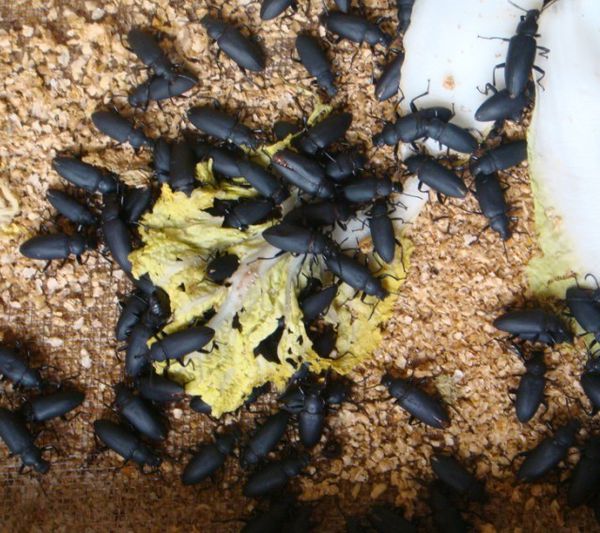
2. ให้ความสนใจกับการให้อาหารหนอนใยอาหารแยกจากกัน
หลังจากที่ตัวอ่อนเติบโตถึงระยะที่ 5 ก็จะกลายเป็นดักแด้ ควรเลือกดักแด้ออกจากกล่องให้อาหารให้ทันเวลาและเก็บไว้ในที่แยกต่างหากเพื่อให้อาหาร เนื่องจากดักแด้ไม่กินอาหารหรือเคลื่อนย้าย ดักแด้จึงสามารถกัดหรือฆ่าได้หากวางไว้กับพวกมัน
3. ใส่ใจกับความหนาแน่นของการเลี้ยงหนอนใยอาหาร
ความหนาของตัวอ่อนในกล่องเพาะพันธุ์ไม่ควรเกิน 2 ~ 3 ซม. เพื่อหลีกเลี่ยงการเสียชีวิตจากไข้ ระยะดักแด้ควรอยู่ในสภาพแวดล้อมที่มีการระบายอากาศ แห้ง และกันความร้อน และไม่ควรปิดและชื้น เพื่อป้องกันไม่ให้ดักแด้เน่าเปื่อยหรือเปลี่ยนเป็นสีเหลืองและสีดำ ในฤดูร้อนเปลือกเปลือกจะแห้งง่าย ควรหมุนอย่างเหมาะสมและฉีดน้ำเล็กน้อยเพื่อให้ผิวเปลือกไม้ชุ่มชื้น ตัวอ่อนและตัวเต็มวัยจะมีนิสัยชอบกินอาหารซึ่งกันและกัน ดังนั้นความหนาแน่นของการให้อาหารไม่ควรมากเกินไป

